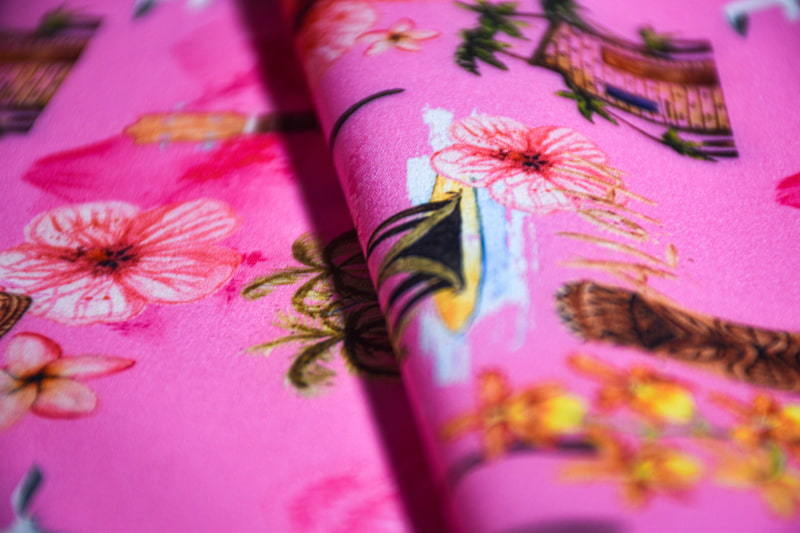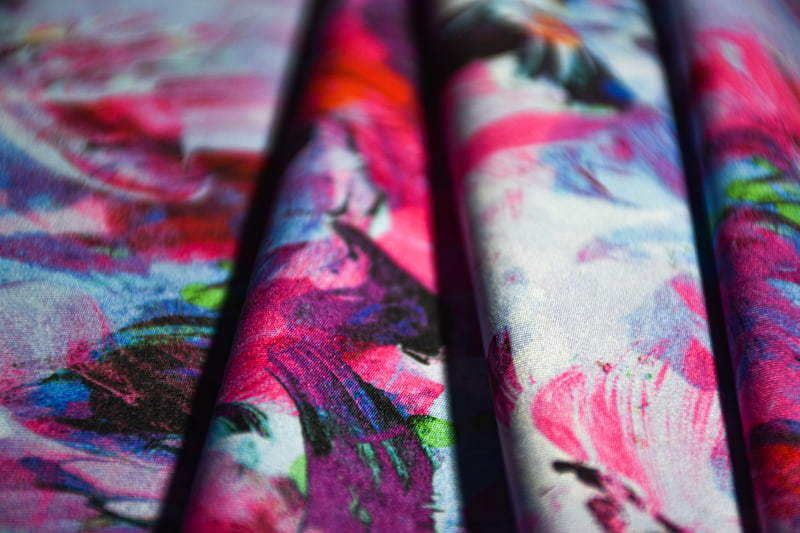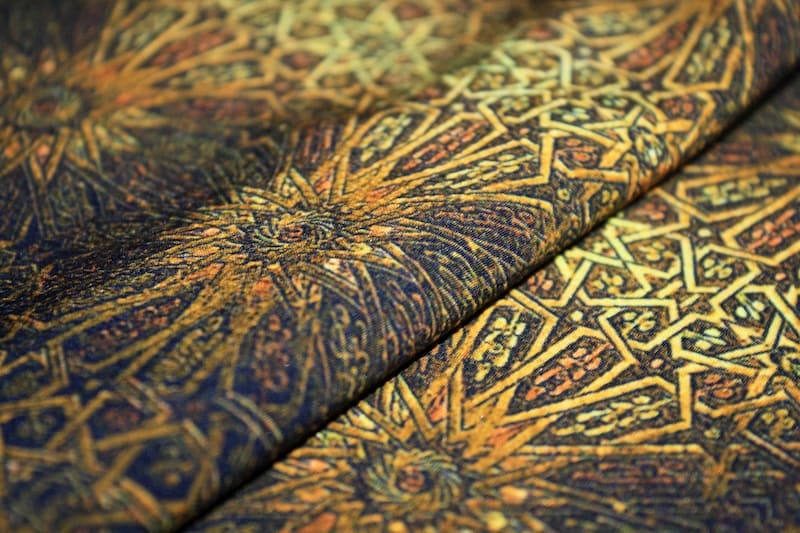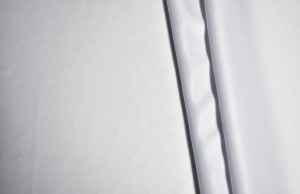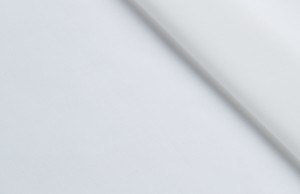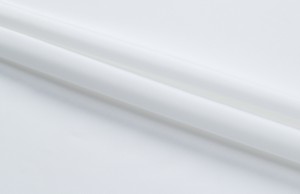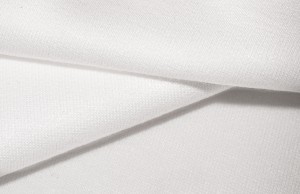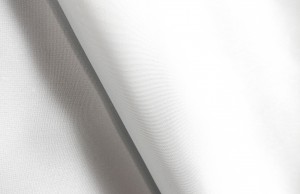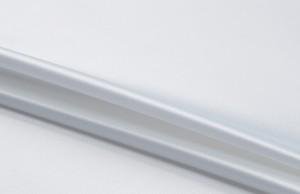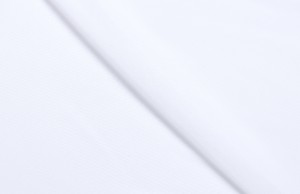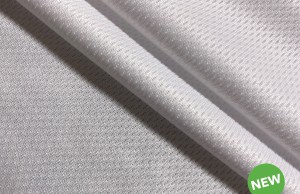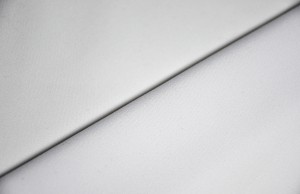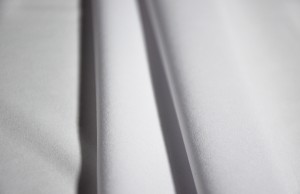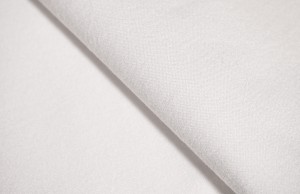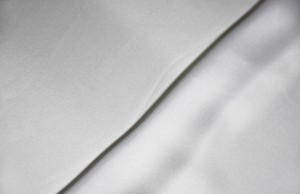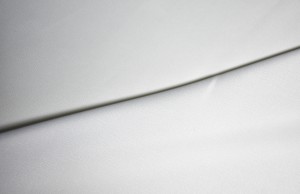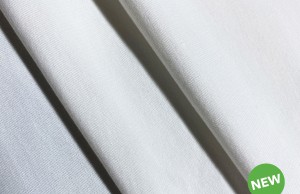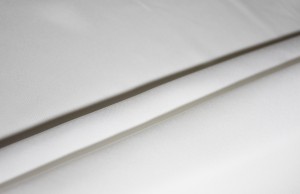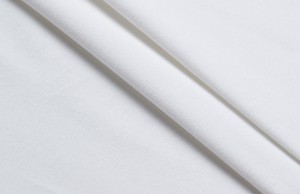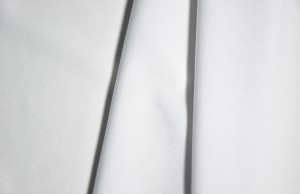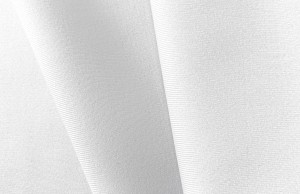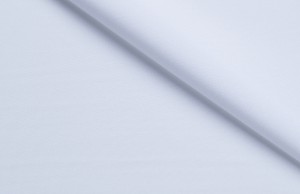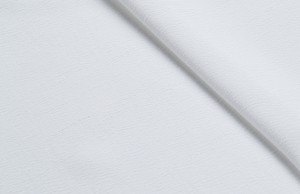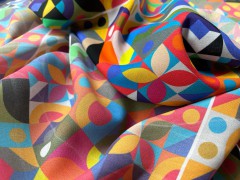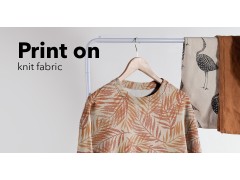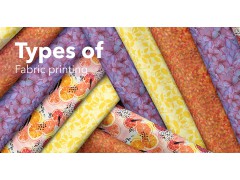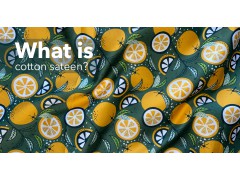What is recycled polyester?
For the production of polyester, plastic is needed. Without diving too deep into the physics of this process, it’s good to know polymerization is used to link plastic chemicals to create polyester. The result is a wrinkle-free material that can easily be washed, and therefore is very popular in the fashion industry.
Recycled plastic uses PET instead, one of the most common materials used for fibers in clothing. Recycled PET fabric is thus used as raw material to create new products. In doing so, polyester that would otherwise end up in a landfill is given a second life.
Fabric type: U-circular Nautica
What is the difference between polyester and recycled polyester?
If we prevent plastic from ending up in a landfill or in the ocean, that will always be more sustainable than the alternative. The degree to which a recycled polyester is sustainable depends largely on how it’s recycled. Through mechanical recycling, plastic is melted and used to create recycled polyester fibers.
Another way to do this is chemical recycling, which means the plastic is broken down into molecules and reformed into new yarn. The latter is more expensive, but the quality of the polyester is constant. Mechanical recycling can only be done a few times before the fiber loses its quality. Both techniques are a way of turning an old sweater or dress into something brand new!
An advantage of using PET to create recycled polyester fibers, is that it takes a lot less energy than the regular polyester production. So, apart from the advantage of not having to use new raw materials, you save up to 50% in the production of your products. This technology is developing quickly. Buying recycled polyester instead of virgin polyester is one way to support this surge for more sustainable clothing.
Is recycled polyester sustainable?
Recycling polyester has a smaller impact on the environment, and no new raw materials are needed for its production. That means it’s more sustainable than virgin polyester. However, there is room for improvement to make the material more sustainable in the future.
If products are not made entirely from recycled polyester but from a blend of materials, recycling them is nearly impossible. In addition, mechanical recycling makes for a less strong polyester. Because of this, the material is often blended with virgin polyester. Nevertheless, the market for recycled polyester is developing, which means it’s very likely that the product will become even more sustainable in the future than it already is today.
Fabric type: U-circular Vita Heavy
Eco-friendly polyester
There is a way to ensure your project has minimal impact on the environment. Eco fabrics use as little water and chemicals as possible for production, take place in closed production systems and meet ecological and social conditions. At House of U, we use U-circular fabric as our 100% recycled polyester fabric. It is made of old plastic PET bottles and has a recycled polyester base (rPET).
Is recycled polyester safe to wear?
In terms of safety, there is no difference between recycled and virgin polyester. Both materials are safe to wear and use. If you have Asthma, using polyester pillowcases and sheets is preferable to cotton. You should avoid wearing polyester around open flames, but the material isn’t highly flammable.
Comparable materials are not safer than polyester. The main differences are in specific attributes of the fabric, like its stretchiness and how easily it can be recycled. That last consideration is where polyester is particularly interesting, since other materials are less easy to, or not even possible to recycle.
What fabric is similar to polyester?
There are some fabrics similar to polyester. All of these have slightly different properties, which means they are commonly used for various purposes. One of these is nylon, the first synthetic fiber that entered the market back in 1940. It is known for its quick-drying properties and durability. At first, the material was used for women’s stockings and during World War II for military parachutes. As of today, recycled nylon is often used in swimwear.
Acryl is also similar to polyester and is used in curtains, furniture upholstery, and blinds. It is more durable than most other synthetic materials and is affected less by sunlight. However, the most important downside to the material is its environmental impact. A study done by the University of Plymouth found that acryl causes substantially more microfibers to be released when washed compared to similar materials like polyester.
If stretchiness is what you’re looking for, elastane is an alternative to polyester that fits the description. It can extend up to 7 times its own length and return to its original shape. The material is also known as lycra or spandex, and is quite similar to acryl. It is often found in swim- and sportswear. Unfortunately, the material doesn’t do well in terms of sustainability. It’s not biodegradable, and as a result, it is likely to end up in a landfill.
Fabric type: Polyester Crepe Marocain
Get started with (recycled) polyester
Have you made up your mind on recycled vs. virgin polyester? Check out our wide range of polyester fabrics, both recycled polyester fabric by the yard, virgin polyester fabric and stretch polyester fabric. Need a hand to help you decide? Feel free to contact us. We’re happy to help!
Do you prefer to see and feel the fabric before ordering a print? Order our Fabric Book and Eco Fabric Kit or only our Eco Fabric Kit to receive fabric sample books of our options. Once you have decided, ordering is easy: just upload your design to our design generator, and we’ll take care of the rest!






